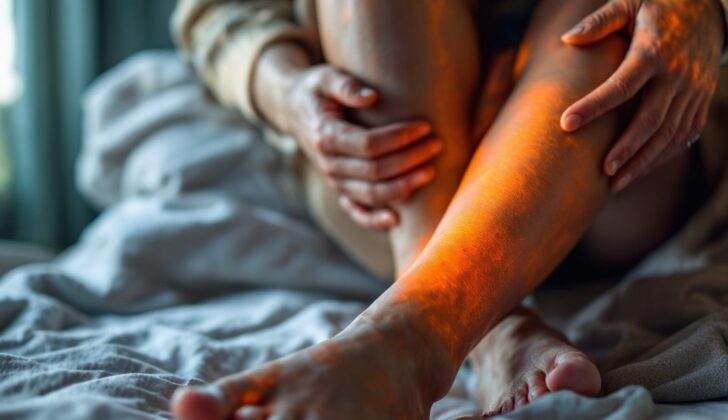If you’ve ever experienced heavy, achy legs or swelling in your ankles after a long day, you’re not alone. While many people chalk this up to aging or being on their feet too long, it could be a sign of something more serious: Chronic Venous Insufficiency (CVI).
In this article, we’ll break down what CVI is, what causes it, the signs to look for, and how it can be treated or managed. Our goal is to help you better understand this common but often overlooked condition—so you can take steps toward feeling better.
What Is Chronic Venous Insufficiency?
Chronic Venous Insufficiency is a condition that occurs when the veins in your legs have trouble sending blood back up to your heart. Normally, tiny valves inside your veins keep blood flowing in one direction—upward. When those valves become weak or damaged, blood can pool in your legs. This leads to swelling, discomfort, and sometimes more serious problems.
Think of it like a plumbing issue: if your veins can’t drain properly, things back up. And over time, this backup can cause pain, skin changes, and even open sores.
Who Is at Risk for CVI?
CVI can affect anyone, but certain people are at higher risk. Risk factors include:
-
Age (especially over 50)
-
Family history of vein problems
-
Pregnancy
-
Obesity
-
Prolonged sitting or standing
-
A history of blood clots (deep vein thrombosis)
Women are more likely than men to develop CVI, likely due to hormonal influences and pregnancy-related vein stress.
Common Symptoms of Chronic Venous Insufficiency
CVI can sneak up slowly, with symptoms getting worse over time. Here are some common signs to watch for:
-
Swollen ankles and legs, especially after standing
-
Aching, tired, or heavy legs
-
Varicose veins (bulging, twisted veins near the surface)
-
Itchy or flaky skin on the legs
-
Discoloration around the ankles
-
Cramping or restless legs at night
-
Skin that becomes leathery or hardened
-
Open sores or ulcers on the lower legs (in advanced cases)
If you notice these symptoms regularly, don’t ignore them. Early diagnosis and treatment can make a big difference.
How Is CVI Diagnosed?
A doctor can often diagnose CVI based on your symptoms and a physical exam. They may also use a non-invasive test called a duplex ultrasound to see how well the blood is flowing in your veins.
This test uses sound waves to look at your veins and measure how quickly blood is moving through them. It’s painless and typically done in a clinic or vascular lab.
Treatment Options for CVI
The good news is that CVI is treatable—and often manageable without surgery. Your doctor may recommend a combination of lifestyle changes, medications, or procedures depending on the severity of your symptoms.
1. Compression Stockings
These snug-fitting socks help squeeze your legs, encouraging blood to flow upward. They’re often the first line of defense and can greatly reduce swelling and discomfort.
2. Elevating Your Legs
Propping your feet up above your heart for 15–30 minutes a few times a day can reduce swelling and improve circulation.
3. Physical Activity
Walking, stretching, and avoiding long periods of sitting or standing can keep your blood moving. Exercise helps strengthen the muscles that support healthy blood flow.
4. Medications
Some people benefit from medications to improve vein tone or reduce inflammation. Your doctor may also prescribe diuretics or blood thinners in certain cases.
5. Medical Procedures
In moderate to severe cases, treatments may include:
-
Sclerotherapy: A solution is injected into varicose veins to close them off.
-
Laser therapy or radiofrequency ablation: Heat is used to seal problem veins.
-
Vein stripping or surgery: Rarely needed, but sometimes necessary for large or stubborn varicose veins.
Tips for Managing CVI at Home
Here are some simple ways you can take control of your symptoms:
-
Wear compression stockings daily.
-
Keep moving—take breaks to walk every 30–60 minutes.
-
Avoid crossing your legs when sitting.
-
Sleep with your legs elevated using a pillow.
-
Drink plenty of water to support circulation.
-
Maintain a healthy weight to reduce pressure on your veins.
When to See a Doctor
If you notice leg swelling that doesn’t go away, pain that gets worse, or skin changes on your lower legs, it’s time to talk to your healthcare provider. Don’t wait until symptoms become severe—early treatment can help prevent long-term complications.
Final Thoughts
Chronic Venous Insufficiency is common, especially as we age, but it doesn’t have to take over your life. By understanding the condition and recognizing the symptoms early, you can take proactive steps to manage it and protect your health.
Your legs do a lot for you—give them the support they deserve.











